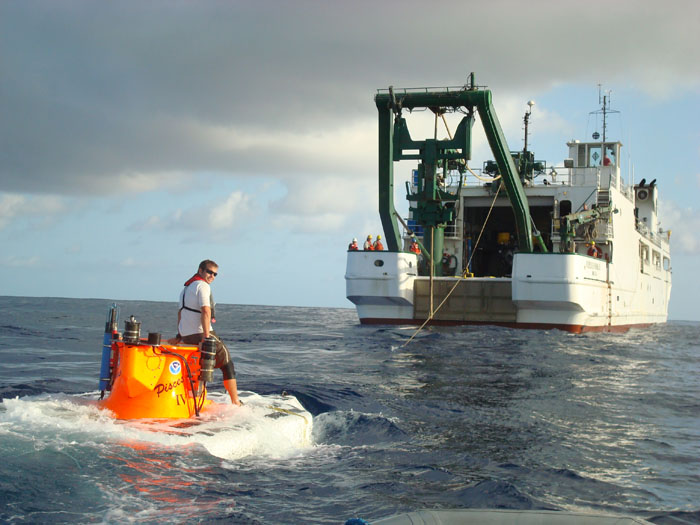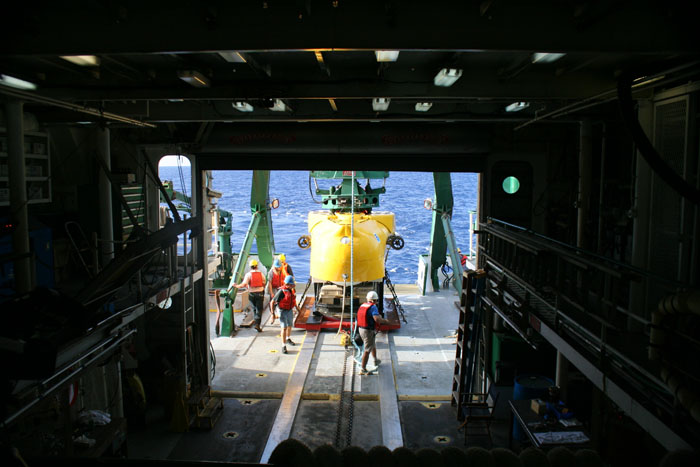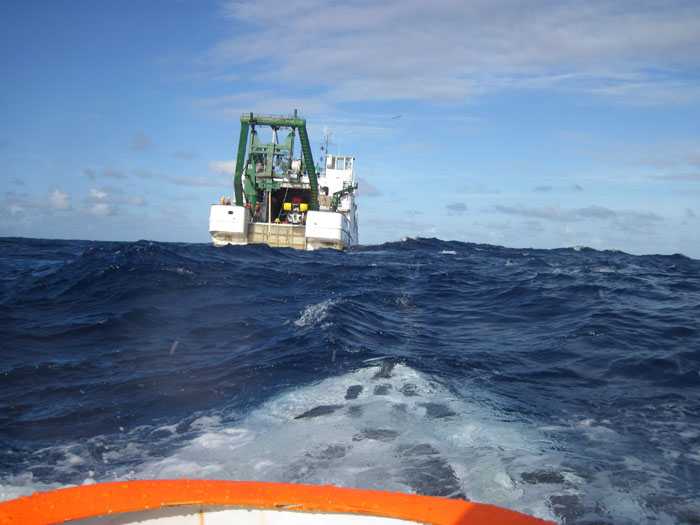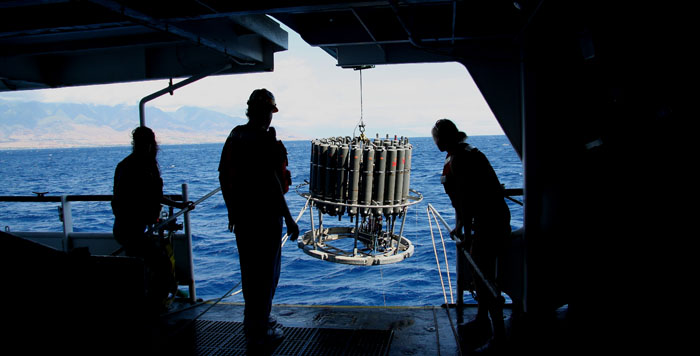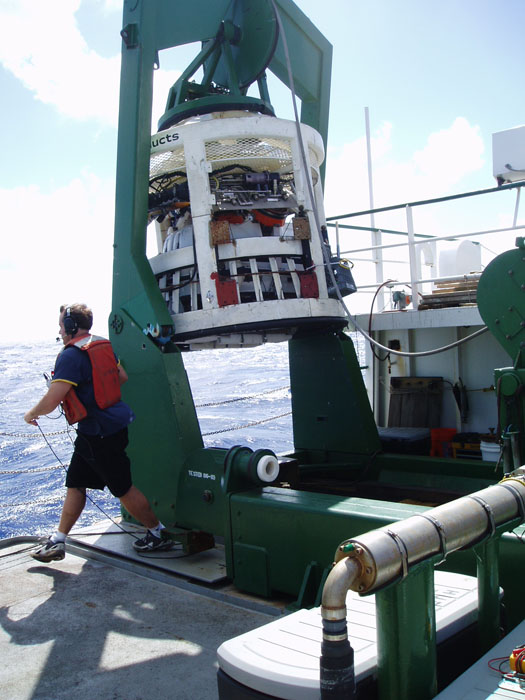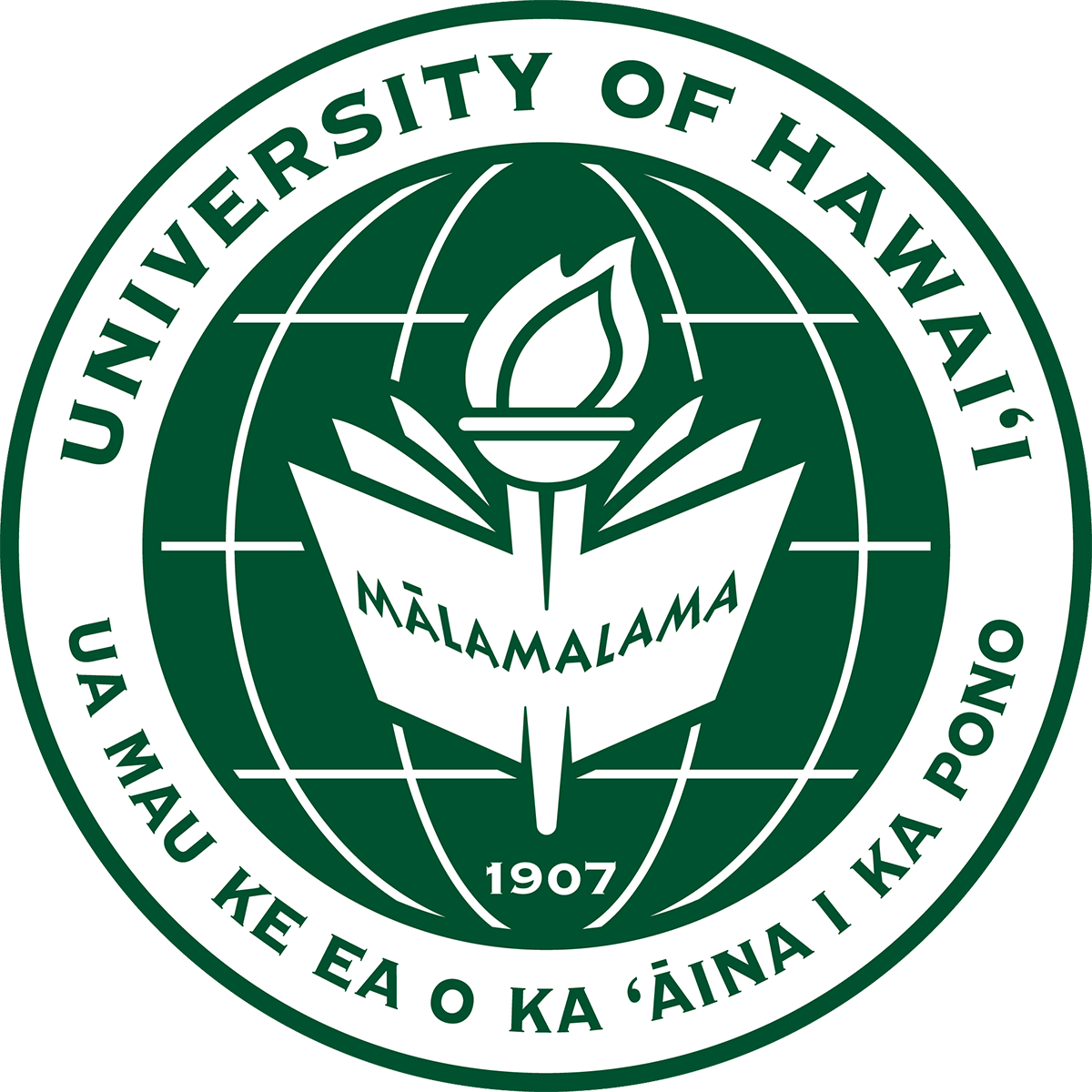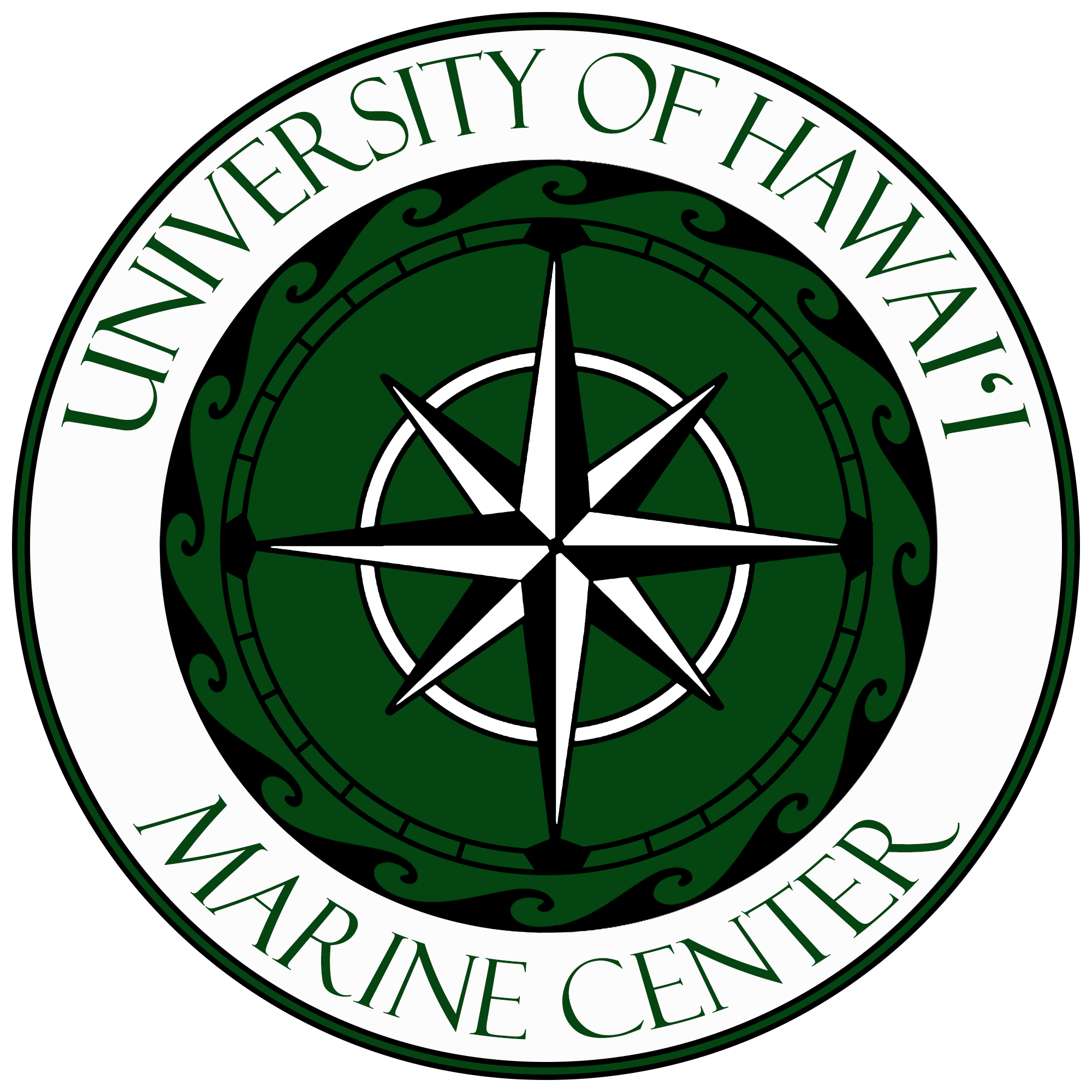In July 1992, a new UH vessel was christened in Mobile, Alabama. The Kaʻimikai-O-Kanaloa (Hawaiian for "Heavenly Searcher of the Seas of Kanaloa" and is also known as the KOK) was built by Mangrove Shipbuilding Co., Houston, Texas in 1979 (Hull #126). The ship had been used for more than a decade for oil exploration until spotted by Alex Malahoff, UH oceanographer and director of the Hawaiʻi Undersea Research Laboratory (HURL). Malahoff envisioned that this vessel could become a valuable asset for the growing UH submersible science programs. Director Malahoff worked tirelessly to acquire and reconfigure this 185-foot vessel to serve as the support ship for HURL's manned submersibles, Makaliʻi, Pisces IV, and Pisces V, and for the remotely operated vehicle (RCV-150). The new, reconfigured platform, R/V Kaʻimikai-O-Kanaloa emerged from Bender Shipbuilding and Repair Co. as a versatile oceanographic research vessel (Hull #9884). The approximately $5 M conversion was funded by the state of Hawaiʻi and NOAA; the state of Hawaiʻi held the ship's title.
In its reconfigured state, the 223-foot, 1961-ton displacement KOK had a cruising speed of 10 knots, a 15,000 nautical mile range (50-day endurance) with a crew of 14 and 19 science berths. The vessel was equipped with two 1,035 HP Detroit diesel main engines, a 1,000 HP electric bow thruster, a 250 KW diesel generator, and a variety of deck cranes and winches in addition to a 15-ton capacity moveable stem A-frame fitted with a submersible launch/recovery system. There were four interior laboratories (total 1,053 sq. ft.), a science conference room, and a library/lounge. A 2- story 1,332 sq. ft. hangar, designed to serve as a shelter for the submersibles while at sea, was constructed mid-ship just forward of the main working deck. The KOK was also equipped with a Sea Beam multibeam sonar bathymetric mapping system that was capable of acoustically charting the seafloor at nearly any ocean depth.
Tour the KOK
On 15 January 1994, the R/V Kaʻimikai-O-Kanaloa was dedicated at a ceremony at Snug Harbor, the vessel's new home port. Since that time, the KOK has been used for a variety of missions in addition to submersible support, ranging from the deployment of deep-sea moorings, to hydrographic surveys, to experimental marine biogeochemistry. Among some the most memorable accomplishments include the discovery of the Japanese midget submarine in tandem with HURL in 2002. The midget sub was sunk by the destroyer USS Ward while trying to enter Pearl Harbor just prior to the aerial attack on Dec 7, 1941. This was the shot that signaled the entry of the United States into WWII. The KOK also facilitated the long-term study of Loʻihi submarine volcano, documenting the development of the new Hawaiian islands, as well as investigated the pristine ecosystems of the single largest conservation area under U.S. jurisdiction and one of the largest marine protected areas in the world, the Papahānaumokuākea Marine National Monument in the Northwestern Hawaiian Islands.
After 25 years of diligent service, the tough decision was made to decommission the KOK in Spring of 2018. All of us at the UH Marine Center wish her “a hui hou” (Hawaiian for “until we meet again”) as her journey continues down another path. Thank you so much for helping us accomplish some extraordinary science throughout the years and all the unforgettable memories!







